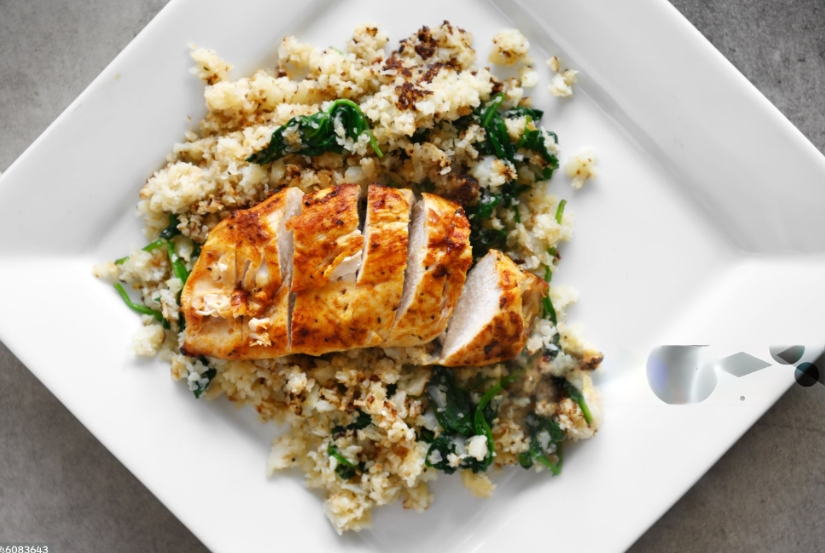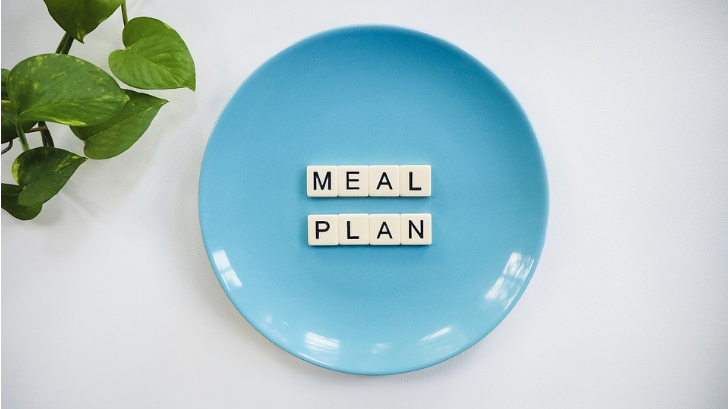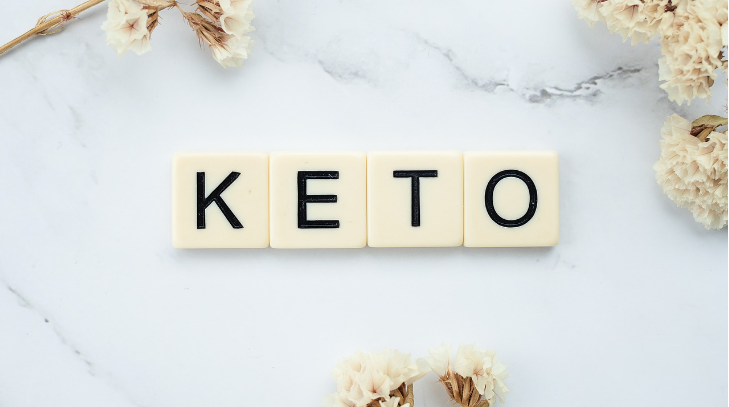Keto Cauliflower Rice and Grilled Chicken Keto cauliflower rice and grilled chicken are a low-carbohydrate diet option that people use during the ketogenic diet. It is a kitchen product made from cabbage, in which the cabbage is finely grated or ground in a mixer and made into rice-sized pieces. That is why it is called “rice”. It is low in calories and high in fiber, making it an ideal choice for the keto diet. Grilled chicken is a delicious and nutritious protein source. In this, chicken pieces are marinated in various spices and curd. These marinated chicken pieces are then cooked on a grill or tawa. Grilling makes chicken tasty and crispy. It is rich in protein and various nutrients and is an excellent option for the keto diet. Cauliflower Rice Ingredients: 1 large cabbage, finely chopped 2 tbsp oil 1 small onion, finely chopped 2-3 garlic cloves, finely chopped 1 small piece of ginger, finely chopped 1/2 tsp cumin salt as per taste 1/4 cup green leafy vegetables (coriander, mint), finely chopped Grilled Chicken Ingredients: 500 gram pieces of chicken 1 cup curd 1 tbsp garlic paste 1 tablespoon ginger paste 1 teaspoon red chili powder 1 teaspoon coriander powder 1 pinch cumin powder Salt as per taste 2 tbsp oil 1 tablespoon lemon juice Chopped coriander for garnish Instructions: For the cauliflower rice: Grate the cabbage finely or grind it little by little in a mixer so that pieces the size of the cabbage’s bottom are formed. Heat oil in a pan and add cumin seeds to it. When cumin seeds start roasting, add onion, garlic and ginger and fry for 1 minute. Add the cabbage pieces to the mixture and mix well. Add salt and cover with lid and cook for 5-7 minutes. Finally add green leafy vegetables and mix. Hot cauliflower rice is ready. Serve them with any spicy vegetable or dal. For the grilled chicken: Mix the chicken pieces well with curd, garlic-ginger paste, red chilli powder, coriander powder, cumin powder and salt. Let it marinate for at least half an hour. Heat a grill pan and add oil to it. Place the marinated chicken pieces on the grill and cook from both sides. Sprinkle cooked chicken with lemon juice and garnish with chopped coriander. Serve The grilled chicken over the cauliflower rice. Nutrition (per serving, 1 chicken breast with 1 cup cauliflower rice): – Calories: 310 – Total Fat: 15g – Saturated Fat: 2g – Cholesterol: 95mg – Sodium: 630mg – Total Carbs: 8g – Fiber: 3g – Net Carbs: 5g – Protein: 37g Benefits of Keto Diet: – Promotes fat loss while preserving muscle mass – Reduces inflammation and improves metabolic health – May help manage type 2 diabetes and other conditions Benefits of Cauliflower: -Cauliflower is rich in vitamin C, vitamin K, folate, and phytonutrients. It helps you fight diseases and keeps the body healthy. -The anti-oxidant elements present in cauliflower protect the body from damage caused by free radicals and prevent cancer, heart diseases and weakening of the immune system. -The fibers present in cauliflower keep the digestive system healthy and help in relieving constipation. -Cauliflower is a low-calorie food and helps in eliminating hunger. This helps in the weight loss process. Benefits of Chicken: – High in protein, low in fat and carbs – Provides essential amino acids for muscle repair and growth – May support weight loss and satiety FAQs: Q: Can I use frozen cauliflower rice? A: Yes, you can use frozen cauliflower rice. Just thaw it before sautéing. Q: How long will the cauliflower rice keep? A: The cooked rice will keep in the fridge for 3-4 days. Q: Can I bake the chicken instead of grilling? A: Absolutely, you can bake the chicken at 400°F for 20-25 minutes until cooked through. Q: What other seasonings can I use on the chicken? A: Try Italian seasoning, cajun seasoning, or lemon pepper for different flavor profiles. Written by- Amisha Chauhan
Tag: fitness
Healthy food chart: how to choose the right one?
Healthy Food Chart for a Daily Routine with Indian Meals Understanding the fact that healthy food chart for men and woman could be different for their daily use. Male Breakfast – 1 overnight oats with 1/2 cup of mixed berries and 1 tablespoon of honey. – 2 eggs (boiled or scrambled) with 2 slices of whole-grain toast. Or Poha with 2 boiled eggs. Lunch – Rice/roti – 1 cup of cooked dal (lentils). – 1 cup of mixed vegetable curry / Salad/ sprouts. – Grilled chicken or fish (any kind or protein). Snack – Low-fat Greek yogurt with of mixed nuts/ roasted fox nut. – Or any kind of fruits. Dinner – Whole-wheat chapati or roti besan ka chilla. – 1 cup of sautéed mixed vegetables (such as broccoli, bell peppers, and zucchini). – 1 cup of grilled salmon or tofu (or any sort of protein). Hydration – Drink at least 8 cups of water throughout the day. Female Breakfast – Oatmeal or overnight oats with mixed berries and honey. You can also use seeds and nuts. – 1 boiled egg with 1 slice of whole-grain toast. Or -Besan chilla with paneer burji and a salad. Lunch – 3/4 cup of steamed basmati rice. – 3/4 cup of cooked dal (lentils). – 3/4 cup of mixed vegetable curry (such as cauliflower, spinach, and carrots). – 1/2 cup of grilled chicken or fish. Snack – 1/2 cup of low-fat Greek yogurt with 2 tablespoons of mixed nuts. – 1 medium-sized banana. Dinner – 1 whole-wheat chapati or roti. – 3/4 cup of sautéed mixed vegetables (such as broccoli, bell peppers, and zucchini). – 3/4 cup of grilled tofu or paneer (or any sort of protein). Hydration – Drink at least 6 cups of water throughout the day. Understanding necessities of healthy food chart Eating a healthy food and a balanced diet is essential for maintaining energy levels, preventing disease, and general well-being. For both men and women, the following healthy eating chart suggests a daily schedule that includes Indian meals to guarantee that vital nutrients are taken in the right amounts. The guidelines for men and women range significantly since each gender has different caloric and nutritional demands. Women often have lower calorie and nutritional requirements, whereas males typically need more to maintain their bigger bodies and higher metabolisms. Muesli is a complex carbohydrate that is high in fiber and gives you energy all day long. It is a breakfast option for both men and women. High-quality protein is provided by the eggs, while natural sweetness and antioxidants are added by the berries and honey. Lunch consists of a combination of lean protein (fish or chicken for males, or tofu/paneer for women), whole grains (like basmati rice), legumes (like dal), and a variety of vegetables. This well-rounded strategy guarantees that complex carbs, fiber, protein, and vital vitamins and minerals are consumed. Fresh fruit and Greek yogurt with almonds are two examples of healthy and filling snacks that can help you avoid overindulging during the next meal and keep your energy levels stable in between meals. Dinner options consist of a selection of sautéed veggies, whole-grain chapati or roti, and a protein source (grilled salmon or tofu/paneer). This meal plan encourages consumption of fiber, vital micro-nutrients, and macro-nutrients in a healthy and balanced manner. Maintaining optimal body functioning throughout the day requires staying hydrated, and the recommended water consumption for men and women differs based on gender. For men, it is 8 cups, while for women it is 6 cups. Conclusion In conclusion, the healthy food chart that is offered provides a basis for a wholesome and well-balanced daily schedule that includes Indian meals and addresses the specific requirements of both genders. You may maintain a healthy weight, lower your risk of chronic illnesses, and improve your general health by implementing these suggestions into your everyday routine. It’s crucial to remember that these are only suggestions; depending on personal circumstances like age, degree of exercise, and any dietary requirements or limitations, this healthy food chart could need to be modified. A customized nutrition plan that supports your unique health and wellness objectives can be developed with the assistance of a certified dietitian or other healthcare expert. Written By:- Amisha
Keto Diet: A Comprehensive Guide
What is the Keto Diet? The ketogenic diet, is a high-fat, low-carbohydrate dietary approach that has gained significant popularity in recent years. It aims to put the body into a metabolic state called ketosis, where the body begins to burn fat for fuel instead of carbohydrates. In a traditional diet, the body primarily uses glucose, derived from carbohydrates, as its main source of energy. This diet, on the other hand, drastically reduces carbohydrate intake, typically to less than 50 grams per day, forcing the body to transition to an alternative fuel source – ketones. Ketones are produced when the body breaks down fat for energy, and they can be used by the brain and other organs as a source of fuel. This metabolic shift can have various health benefits, including weight loss, improved insulin sensitivity, and reduced inflammation. Benefits of the Keto Diet 1. Weight Loss: The diet is known for its ability to promote weight loss. By restricting carbohydrates and increasing fat intake, the body enters a state of ketosis, which can lead to a higher rate of fat burning and reduced appetite. 2. Improved Insulin Sensitivity: This diet has been shown to improve insulin sensitivity, which is crucial for managing blood sugar levels and reducing the risk of type 2 diabetes. 3.Reduced Inflammation: The high-fat, low-carb nature of the diet can help decrease inflammation in the body, which is linked to various health conditions, such as heart disease, cancer, and Alzheimer’s disease. 4.Improved Brain Function: Ketones can provide an alternative fuel source for the brain, which may lead to improved cognitive function, focus, and mental clarity. 5. Epilepsy Management: This diet has been used successfully to manage epilepsy, particularly in children, by reducing the frequency and severity of seizures. What to Do on the Keto Diet Focus on High-Fat Foods: This diet emphasizes consuming high-fat foods, such as avocados, nuts, seeds, olive oil, and fatty cuts of meat. Limit Carbohydrate Intake: To achieve and maintain ketosis, it’s essential to limit carbohydrate intake to less than 50 grams per day. This means focusing on low-carb vegetables, berries, and other non-starchy foods. Increase Protein Intake: While the diet is high in fat, it’s also important to consume an adequate amount of protein to support muscle mass and overall health. Stay Hydrated: Drinking plenty of water is crucial while following this diet, as the body may lose more fluid and electrolytes during the initial stages of the diet. Monitor Ketone Levels: To ensure that you’re in a state of ketosis, you can use urine, blood, or breath tests to monitor your ketone levels. What to Avoid on the Keto Diet High-Carb Foods: Steer clear of high-carb foods, such as bread, pasta, rice, potatoes, and sugary treats, as these can disrupt ketosis. Processed Foods: Avoid processed and packaged foods, as they often contain hidden carbohydrates and preservatives that can hinder your progress on the diet. Alcohol: Alcohol can be high in carbohydrates and may slow down the process of achieving and maintaining ketosis. Legumes: While some legumes, such as chickpeas and lentils, can be included in moderation, they are generally higher in carbohydrates and should be limited. Certain Vegetables: Some vegetables, such as carrots, beets, and corn, are higher in carbohydrates and should be consumed in moderation while following this diet. Conclusion This diet is a powerful dietary approach that can provide a range of health benefits, from weight loss to improved brain function. By understanding the principles and following the recommended guidelines, individuals can potentially experience transformation results. However, it’s important to remember that it may not be suitable for everyone, and it’s always best to consult with a healthcare professional before starting any new dietary regime. With the right approach and commitment, it can be a highly effective tool in achieving one’s health and wellness goals.Remember, this diet is a highly individualized approach, and it’s important to consult with a healthcare professional before starting any new diet or making significant changes to your eating habits. Written By:- Amisha




